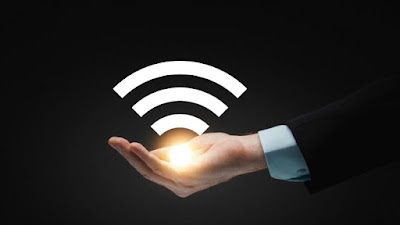The Miraculous Tech-Innovation Called Lifi Lamps – Smart Led Lamps to Power Your Data Needs
With the available electromagnetic spectrum getting bogged down with our
non-stop exchange of information, the need to find a plausible solution to
support this massive data traffic has become more pressing than ever. The
latest tech innovation in the field, being hailed by many as the leading
contender to pick up this slack, is Li-Fi.
LiFi Lamps are the newest in-thing in the market and are
believed to be greener, faster, and better than Wi-Fi and fiber combined! And if you haven’t caught on to this hot new
trend, this is where you can learn everything there is to know about LiFi and
how these smart LED lamps can
change the way you manage your internet connectivity requirements.
What is LiFi?
Li-Fi stands for Light Fidelity – a technology that uses a Visible Light
Communications (VLC) System to run wireless communications. This technology
therefore, turns your light bulb into an internet router and uses the light it
emits to provide you with connectivity to the internet.
How Do LiFi Lamps Work?
An LED Light bulb is actually a semi-conductor light source, meaning
that the constant current of electricity that is used to power is can be upped
and dimmed at extremely high speeds. The changes in light generated as a result
of this current fluctuation are generally invisible to the human eye.
Now a LiFi system uses a combination of smart
LED lamps, a powerful photo detector to receive light signals
and a signal processing element. The light waves emitted by a Lifi Lamp is received by the
detector and converted back into a binary data stream to run internet enabled
applications.
The technology by-passes the use of electromagnetic radio waves entirely
and turns your LED lamp into an internet router. How cool is that?!
What Features Can You Expect From A Lifi
Lamp?
Different brands have now come up with a range of different Lifi
products in the market, each of which offers a host of features for an enriched
user experience. Oledcomm however, is
the market leader and one of the first companies to have brought
Lifi lamp
in the market.
Taking its top quality products as an example, let’s look at the
features one can expect from a standard LiFi set-up:-
- Data speeds up to 23mbps.
- Electricity consumption of up to 25W at a maximum.
- Compatibility with Linux, Windows and iOS run devices with Type A and C USB ports.
- Desktop and Mobile LiFi Application to help manage your network.
- Security via setting up a personal password.
- Control over users and to the network.
- Options to control your light and LiFi schedules as per usage requirements.
How does LiFi compare to WiFi?
Anyone would think that LiFi and its 224
gigabits per second data speed potential is enough to leave WiFi in the dust,
but in practical applications, both technologies have their pros and cons. LiFi
signals cannot pass through walls, which means that a smart LED lamp will
have to be installed in each room in an establishment to ensure uninterrupted
connectivity.
Similarly, absence of light bulbs cripples a
LiFi network entirely, meaning that it is still an under-developed technology
for powering public access internet networks. However, LiFi is a more robust,
more eco-friendly, more capable, fast and efficient system than WiFi and it
also negates the inherent reliability and security that are commonly associated
with the latter.
The choice therefore, is perfectly clear. LiFi smart LED lamps are the next big
thing – a technology that will change the way we manage our internet
connectivity needs.







Comments
Post a Comment